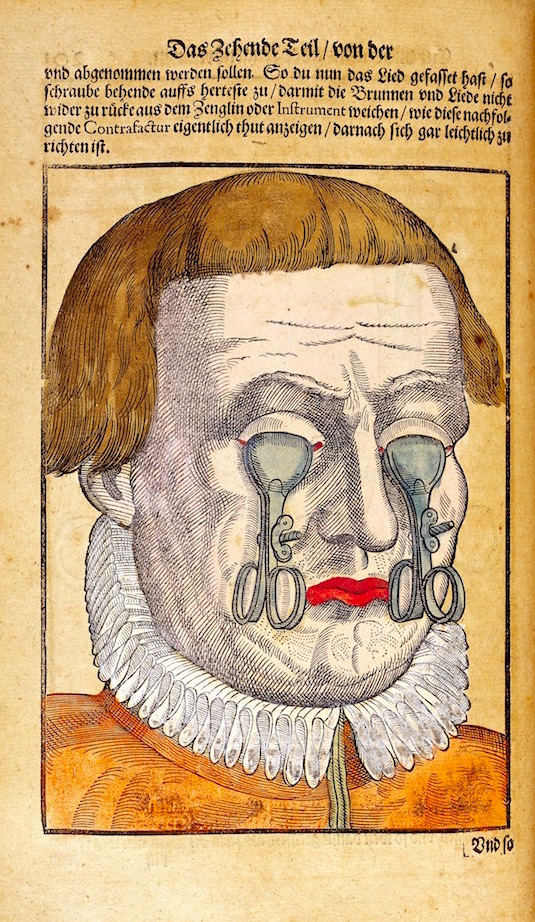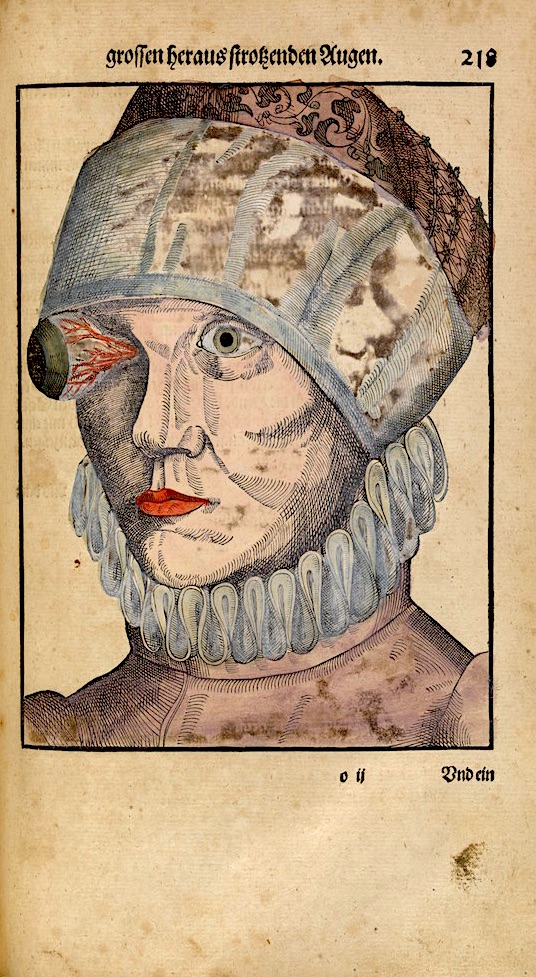
Jacques Fabien Gautier was a printmaker, painter, anatomist and philosopher who is now best remembered for his often lurid anatomical illustrations.
Born in Marseilles in 1716, Gautier began his career as a painter before moving onto printmaking where he developed an interest in the techniques of color printmaking which were then being pioneered by Jacob Christoph Le Blon (1667-1741). Gautier posited the theory colored prints could be created in much the same way as colored patterns were woven into cloth.
In 1736, Gautier moved to Paris—as he believed only great ideas came from great cities. Here he met Louis-Bertrand Castel, a mathematician and scientist who encouraged Gautier to investigate his theories into color printing. However, many of Gautier’s proposals for three and four color printing had been already developed by Le Blon. In 1738, Gautier joined Le Blon’s color-printing workshop but left after only six weeks. He then adopted Le Blon’s ideas and established a printmaking business as a four color printmaker.
Gautier had one good idea—he decided to produce all of the color anatomical illustrations for medical studies. He collaborated with Jacques Francois Duverney, a lecturer in anatomy at the Jardin du Roy. Together they produced l’Essai d’anatomie or Myologie complete en couleur et grandeur naturelle, composée de l’Essai et de la Suite de l’Essai d’anatomie en tableaux imprimés (1746) and Anatomie de la tête, en tableaux imprimés qui représentent au naturel le cerveau sous différentes coupes, la distribution des vaisseaux dans toutes les parties de la tête, les organes des sens et une partie de la névrologie, d’après les pièces disséquées et préparées par M. Duverney, en 8 grandes planches dessinées, peintes, gravées et imprimées en couleur et grandeur naturelle, par le sieur Gautier or Anatomie de la tête (1748).
The collaboration earned Gautier respect. He became known as a philosopher and anatomist became and was made a member of the Dijon Academy of Sciences. In 1752, he published a baffling critique on Sir Isaac Newton’s theory of color—Chroa-génésie—in which amongst other things he claimed:
...the sun as the universal agent and motive force. According to Gautier’s theory, the force of its rays generates planetary motion, and it is the source of light and fire, substances with broad significance and many uses according to his system. Modified, they create thunder, lightening, and such geologic phenomena as volcanoes and earthquakes…
Gautier’s theories showed his “understanding of geometry is even less exact than his understanding of Newtonian optics.” His writing was described as “convoluted” and “unintelligible.” Surprisingly, this did not stop Gautier from being taken seriously (if only briefly) as a philosopher—enough to have the great writer Goethe suggest his treatise on color deserved an answer. Goethe also described Gautier as “an active, quick, rather impulsive man, certainly gifted but more than befittingly aggressive and sensational.”
Some critics considered Gautier veered more towards the sensationalist than the scientific:
[Gautier’s] anatomical illustrations while they may perhaps be fascinating to the layman…impress the critical observer with their arrogance and charlatanery and do not recommend themselves to the student of anatomy either for their faithfulness or their technique.
His later work in particular—when Gautier was acting as both anatomist and illustrator—has been dismissed as:
“....probably aimed at more prurient-minded lay persons than at anatomists.”
In a pre-Bettie Page world, I suppose that you took what you were offered?
Now largely forgotten as a natural philosopher and anatomist, Gautier (or Gautier d’Agoty as he later called himself) is now best known for his illustrative work for Jacques Francois Duverney’s three volumes on anatomy.
A copy of Essai d’Anatomie can be viewed and downloaded here.
From ‘l’Essai d’anatomie’.



More after the jump…





























